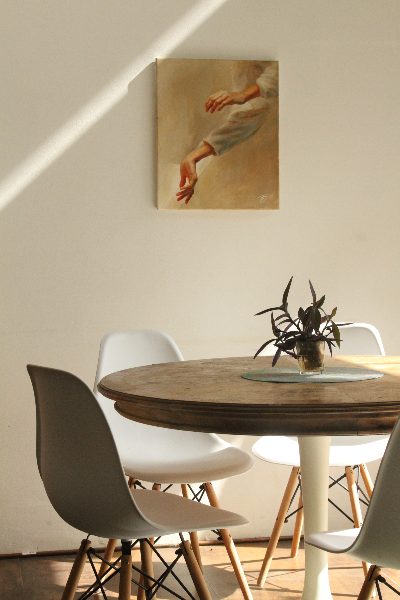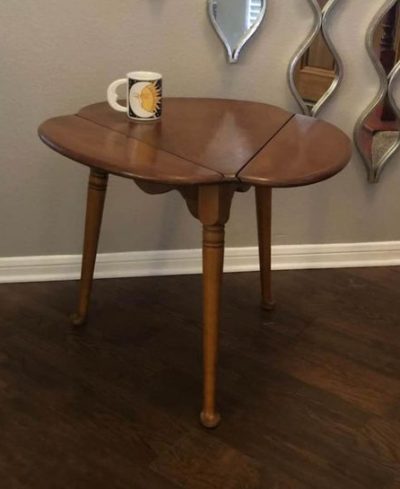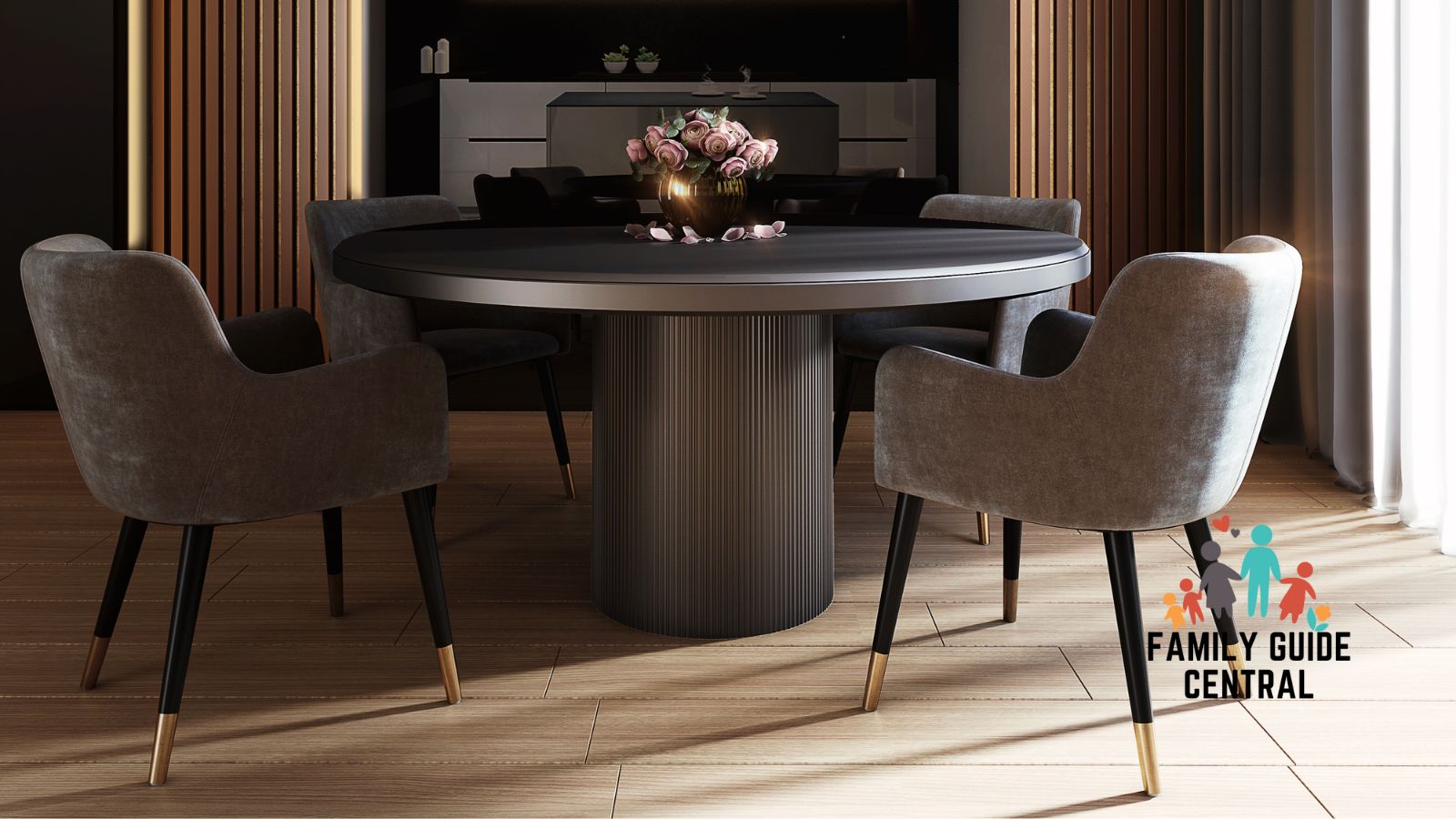How Many Legs Does a Dining Table Have? (Legs vs Seating Capacity)
Not all tables are created equal. In fact, some tables have more legs than others. But does that make them better?
In this article, we’ll explore how many legs your dining table should have and why—and what you can do to make sure your table is properly designed for the number of people who will be sitting down at it.
How many legs can a dining table have?
The answer to how many legs a table really needs depends on its stability and size. A dining table can have any number of legs from 1 to 6, or even more in special cases. A lack of legs may affect the table’s durability as well as its weight and stability capacity. However, having too many legs can interfere with seating and the user experience.
Can a table have just 1 leg?
Yes, these are called single-leg dining tables. Compared to what you’d normally see in table legs that exist closer to the outer edge of the corners of a table, a single leg is placed in the center of the table.

This would be the only way to provide a necessary balance to the table itself. Having the single leg at the center of the table distributes the upward force of which the tabletop counters. This creates a surprisingly strong table. Even having a very large person or heavy object stand on the table may not even be a challenge for such a table. The reason for this is that the single-leg is pushing back on the core of the table.
Yes, as you travel away from the center of the table, the durability of the table becomes less and less
There’s also another caveat to this design. It’s that the table cannot be too large. If it is, then the leg would have to be even larger to accommodate and make up for the size of the tabletop.
Generally speaking, the tabletop would best be in the shape of a square or circle for this matter. That way, there’s a relatively even distance from the center of the table where the leg is to the edge of the table for the circle. And as for the square, it would at least be an equal distance from the center to all 4 corners.
Also having a single leg means that the leg is going to have to be extremely large all around.
These types of legs usually have a very wide base or foot that either splits into many different feet for balance and support. These are must-have parts of a one legged table.
How many people can fit in this type of table? The maximum would be 3 because of how small the table would have to be stable under a single leg.
Can a table have just 2 legs?
This design is a step up from a single-leg table and quite more conventional. Here you have 2 large pillars underneath a table holding up a tabletop from beneath.
The benefit here is that they don’t necessarily have to be quite as large as the single-leg table. However, they still must be large enough to hold up the table from 2 different sides.
Legs like this would be most suitable if you had a long rectangular table or a long oval-shaped table.
The idea of the legs is pretty much identical to the single-leg table in that these legs need to be further out enough from each other to cover as much of the table as equally as possible. However, the way the legs would be set up would be in a series-like design across the length of the table.
Again durability and stability are the key so it’s important to have those wide stability feet to keep the table from falling over.
How many people can sit under a 2 legged table? It can fit just as much as 4-6 depending on how big the table is. There would be 2 people on each side of the table along with 1 on each end of the corner. Two-legged tables can be big or small which depends on the size of the tabletop and how well the 2 legs are built to support that tabletop.
Can a table have 3 legs?
I’ve never actually seen a table with 3 legs in person before. But it’s possible and they exist.
What would a table like this be like? Well, it’s pretty simple really.

The legs would be just regular sized legs. Oriented in a triangular fashion to support the tabletop.
It doesn’t seem very stable does it? But that’s probably why you might not see this type of design built as a dining table.
After doing a quick Google search, I’ve noticed that these are almost always built as side tables, end tables, or coffee tables.
I don’t recommend this type of table for heavy duty work, nor would I trust to have a family dinner over it.
This type of table isn’t meant for multiple people due to the lesser extent of stability and durability due to how the legs are oriented.
One advantage to having 3 legs is that you won’t have any issues with a wobbly table. All 3 legs will always be touching the floor.
So how many people can fit under a 3 legged table? The answer is most likely a maximum of 3 people comfortably. I can imagine 3 people sitting close to each other and having coffee.
Why do most tables have 4 legs?
This is probably the most common form and type of table in existence. A 4 legged table adds what is arguably the best stability and seating comfort ratio.
Here, there are enough legs to share very heavyweights that may be used on the table. With the legs attached to all sides of the table, you can include many more tabletop shapes of your choice when deciding to go with a 4 legged table.
You can’t go wrong with 4 legs under a table. It’s always been the customary number for the majority of tables we know of in today’s world.
Having a 4 legged table means you’ll be able to fit 4-6 people on a table like this.
Are there any tables with 5 legs?
So imagine a regular 4 legged table, but the length of the table is really long. Think about a long rectangular table.
In some cases, if the table is just too long for just 4 legs at the 4 corners, you see a 5th leg added in.
This 5th leg is often placed in the middle to add that extra center support for the table.
The other benefit is not only that it improves durability at the core of the table, its center, but it also is so minimal, it might not be noticed at all by the group of people sitting down on that table.
Being that this table requires a 5th leg, the maximum number of people is going to be 8. That means you can fit about 3 people on each side of the table and 1 on each end.
What tables need 6 legs and beyond?
Having 6 legs on a table means that it happens to need a lot of stability. This is the type of table that can probably hold many people at a time. You have to keep in mind however that a second pair of legs in the middle of a long table does get in the way of the people sitting there.

It can be uncomfortable but necessary if you have an extremely large party of people.
I would say that most people will never have a table this large that requires this many legs unless it’s not family related and more business related.
Once again, at this point, we’re probably talking about executive-class tables filled with board members of a large company. These tables can fit up to 14 people and perhaps beyond depending on how big, long, and wide your table is.
Does the shape of a table determine the number of legs?
Round tables
Most of the time, round tables are more stable than square or rectangular tables because their shape spreads the weight evenly.
A round table can be held up by three legs, but most have four legs for looks or because the tabletop is heavier.
Rectangle tables
Rectangular tables usually require four legs for stability, with two legs on each end. The length of the table determines where the legs go, and tables that are longer may need more legs to support them.
Square tables
Square tables also require four legs for stability, with one leg at each corner. Like rectangular tables, larger square tables may require additional legs to maintain stability.
Oval tables
When it comes to where the legs go, oval tables are similar to rectangular tables, but their curved edges may mean that they need more legs.
The shape of the tabletop can also affect the stability of the table. For example, if the tabletop is wider in the middle and narrower at the ends, the legs may need to be placed closer together to maintain balance.
7 tips for choosing table legs
Take into account its shape
As mentioned earlier, the shape of a table can impact the number of legs it needs for stability.
Most round tables can stand on three legs, but most rectangular and square tables need four legs. Oval tables may require additional legs due to their curved edges.
What is the ideal size and height?
The size and height of a table can also impact the number of legs it needs. Generally, larger and taller tables require more legs to maintain stability.
The ideal height for a dining table is around 28–30 inches, while other tables may have different height requirements depending on their intended use.
Materials according to their intended use
The materials used for table legs should be chosen based on their intended use.
For example, metal or heavy-duty plastic legs may be better for outdoor tables, while wooden legs may be better for indoor tables.
What is the ideal height for a dining table?
As mentioned earlier, the ideal height for a dining table is around 28 to 30 inches. This height allows for comfortable seating and easy access to the table.
To match tiles and decoration
Table legs should be chosen to match the overall style and décor of the room.
For example, fancy wooden legs might be better for a traditional dining room, while sleek metal legs might be better for a modern living room.
In case of legs with wheels
If you want to add wheels to your table legs, you may need to consider the number of legs carefully.
Each leg of a table with four legs can be easily fitted with wheels, but balancing and stabilizing a table with three legs may take a bit more creativity.
Is having four legs or a central foot better?
The decision between four legs and a central foot depends on personal preference and the intended use of the table.
Four legs may be more stable and easier to balance, while a central foot can provide more legroom and easier movement around the table.
But tables with a single foot in the middle may be harder to level and may need more care over time.
The pros and cons of having a dining table with more legs
Pros of having a dining table with more legs
- Stability: A dining table with more legs, such as four or six, is generally more stable than a table with fewer legs. The additional legs distribute the weight of the tabletop more evenly, reducing the risk of wobbling or tipping.
- Durability: A table with more legs may be more durable in the long run, as the weight is distributed more evenly across the legs, reducing the stress on each individual leg.
- Support for heavy loads: If you plan on using your dining table to support heavy loads, such as large serving dishes or centerpieces, having more legs can provide additional support and prevent sagging in the center.
Cons of having a dining table with more legs
- Legroom: Depending on the design of the table, having more legs can reduce the amount of legroom for guests, making it uncomfortable to sit at the table for long periods.
- Aesthetics: Some people may find the additional legs to be aesthetically unappealing or distracting, depending on the design of the table and the overall décor of the room.
The pros and cons of having a dining table with less legs
Pros of having a dining table with fewer legs
- Aesthetics: Tables with fewer legs, such as pedestal tables with a central support, can be more visually appealing and provide a cleaner, sleeker look.
- Legroom: Tables with fewer legs can provide more legroom for guests, making it more comfortable to sit at the table for long periods.
- Easier to clean: Tables with fewer legs may be easier to clean, as there are fewer legs to navigate around and clean underneath.
Cons of having a dining table with fewer legs
- Stability: Tables with fewer legs may be less stable, especially if the table is large or heavy. The weight of the tabletop is concentrated on fewer legs, which can increase the risk of wobbling or tipping.
- Durability: Tables with fewer legs may be less durable in the long run, as the weight of the tabletop is concentrated on fewer legs, leading to more stress on each individual leg.
- Limited support for heavy loads: If you plan on using your dining table to support heavy loads, such as large serving dishes or centerpieces, having fewer legs may not provide enough support, leading to sagging in the center.
How dining table legs protect against a low center of gravity
Dining table legs play an important role in protecting against a low center of gravity. When most of an object’s weight is at or near its base, it has a low center of gravity and is more likely to tip or fall over.
A low center of gravity can happen in a dining table if the weight of the tabletop isn’t spread out evenly or if the legs are too short.
By extending the base of the table away from its center of gravity, the legs of a dining table make it more stable and sturdy.
This helps spread the weight of the tabletop out more evenly, making it less likely to fall over or shake.
Also, longer table legs can help to raise the center of gravity of the table, making it less prone to tipping.
In order to protect against a low center of gravity, it’s important to choose dining table legs that are strong, sturdy, and of an appropriate length for the size and weight of the tabletop.
Tables with more legs can help spread the weight of the tabletop more evenly, making it less likely that the table will fall over or wobble.
The position your dining table legs
- End overhang: In this configuration, the legs are positioned at either end of the tabletop, leaving a space in between. This is normal for rectangular or oval tables, where the legs are set up to give seated guests the most room for their legs. However, make sure that the legs are positioned far enough away from the edge of the table to prevent tipping or wobbling.
- Main span: In this configuration, the legs are positioned underneath the main span of the tabletop, typically in a parallel configuration. You’ll oftentimes see this design for larger tables or tables that need to support heavy loads, as the main span provides additional support and stability. Unfortunately, this configuration can limit legroom for seated guests.
- Width: In this configuration, the legs are positioned at either side of the table, typically in a perpendicular configuration. This is a common configuration for square-shaped tables, as it provides stability and support across the width of the table. However, this configuration can also limit legroom for seated guests.
Other interesting articles:
- How Long Does It Take to Assemble a Dining Table? (Tips for the Quick and Easy Methods)
- Do Dining Room Tables Come Assembled? (Tips you Won’t Find in the Instructions)
- The 7 Best Finishes for Wooden Dining Tables (Based on a Large Community Poll)
- The Best Materials Used in Dining Tables (Types of Top, Coating, Legs and More)
